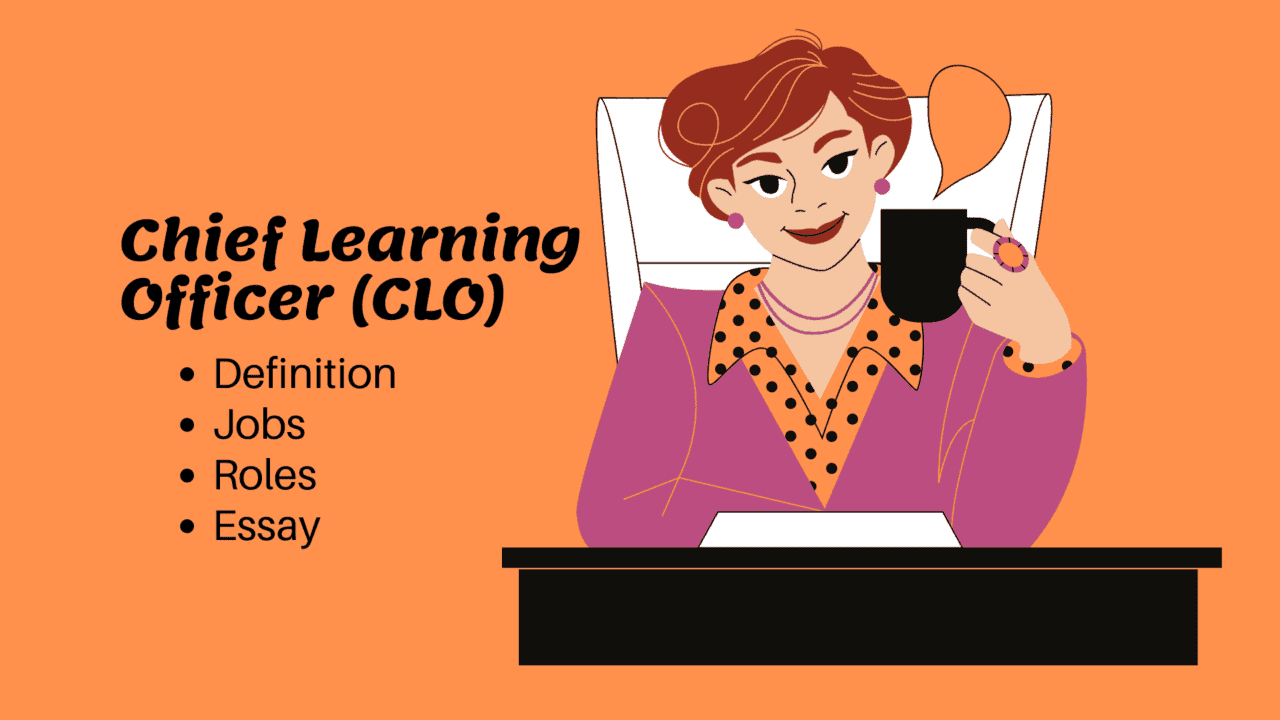As a prerequisite for forecasting, the financial analysis role is also a summary of past business activities in Financial Management. Taking financial analysis is an important means of financial management. It can use to understand the financial status and operating results of the enterprise. And can provide a decision-making basis for leaders. This Essay article Discussion the research on enterprise financial analysis has important practical significance. It proposes to discuss the problems existing in the current enterprise financial analysis in our country. And propose corresponding countermeasures.
Here are the articles to explain, the Financial analysis role in financial management with method function:
Financial analysis is mainly based on the financial indicators reflected in the financial report of the enterprise and evaluates and analyzes the financial status and operating results of the enterprise, to reflect the advantages and disadvantages of the enterprise in the operation process, financial status, and development trend, to improve the financial management of the enterprise. Provide important financial information to work and optimize economic decisions. Financial management is an important part of the internal management of enterprises, and financial analysis plays a pivotal role in the financial management of enterprises. Strengthening financial management concepts, financial analysis procedures, and financial analysis methods is important for improving the level of enterprise financial management. significance.
The content of financial analysis.
The content of financial analysis stands mainly divided into external analysis content. And internal analysis content is according to different information users, and special analysis content can also stand set. Specifically, the contents of enterprise financial analysis include: financial analysis is a financial activity that analyzes the risks and operating conditions of the enterprise based on the accounting data such as enterprise financial statements, using special accounting techniques and methods. It is an important part of the production, operation, and management activities of an enterprise, as long as its content includes the following parts:
Analysis of the financial status
The financial status of an enterprise is the results of production and operation reflected in funds. The assets, liabilities, and owner’s equity of an enterprise reflect the production scale, capital turnover, and stability of the enterprise’s operation from different aspects. Analyzing the financial status of an enterprise includes: analyzing its capital structure, capital use efficiency and asset use efficiency, etc.
Among them, the analysis of capital utilization efficiency and asset utilization efficiency constitutes the analysis of the operational capability of the enterprise, which is the focus of the analysis of financial status. Common indicators: current asset turnover ratio, inventory turnover ratio, corporate accounts receivable turnover ratio, etc.
Profitability analysis
The profitability of an enterprise is the direct purpose and power source of the capital movement of the enterprise, and generally refers to the ability of the enterprise to obtain profits from the sales revenue.
Profitability can reflect the quality of the business performance of the enterprise. Therefore, the managers, investors, and creditors of the enterprise attach great importance to and care about it. Common indicators for profitability analysis: main business profit margin, operating profit margin, gross profit margin, net sales margin, etc.
Solvency analysis
Solvency refers to the borrower’s ability to repay debts. Which can divide into long-term solvency and short-term solvency. Long-term solvency refers to the reliability of an enterprise’s guarantee of timely repayment of debts due in one year or more than one business cycle.
Its indicators include fixed expense coverage ratio, interest coverage ratio, total capitalization ratio, and debt-to-EBITDA ratio. Short-term solvency refers to the ability of an enterprise to pay. Its debts are due within one year or a business cycle of more than one year. Its indicators include cash ratio, working capital, quick ratio, current ratio, and so on.
Cash flow analysis.
Cash flow analysis is a financial evaluation of an enterprise’s solvency, profitability, and financial demand through cash flow ratio analysis. Common indicators include sales cash ratio, cash debt ratio, cash reinvestment ratio, and cash meeting internal demand ratio.
Analysis of investment return.
Return on investment refers to the return a business receives after investing its capital. The indicators commonly used in investment return analysis return on capital, return on shareholders’ equity, return on total assets and return on net assets.
Analysis of growth capability.
The growth potential of an enterprise is the development potential formed by continuous expansion. And the accumulation of the enterprise through its production and operation activities. It is the most concerned issue for investors when purchasing stocks for long-term investment. The indicators commonly used in growth capability analysis are profit growth rate, sales growth rate, cash growth rate, net asset growth rate, and dividend growth rate.
The role of financial analysis in corporate financial management.
Financial analysis is an important basis for evaluating the business performance and financial status of the enterprise. Through the analysis of the financial status of the enterprise, one can understand the cash flow status, operating ability, profitability, and solvency of the enterprise, which is helpful for managers and their related personnel to objectively evaluate operators. Through analysis and comparison, the micro-factors and macro-factors, subjective factors, and objective factors. That may affect the operating results and financial conditions distinguished, and the boundaries of responsibilities stand drawn. The performance of the operators stands objectively evaluated, and the promotion of the management Better management level.
According to the analysis results of the financial situation, the company can supervise the implementation of national guidelines, policies, laws, regulations, and the completion and payment of taxes and profits. In recent years, China’s reform has continued to deepen, and the government’s management of enterprises has shifted from micro-management to macro-control. Therefore, objective and effective financial analysis data plays an important role in formulating economic policies and judging macroeconomic performance by relevant state departments.
Tools of Financial Analysis
Financial analysis is a tool to provide creditors and investors with the correct information to implement decision-making. Investors of enterprises can understand the profitability and solvency of the enterprise through financial analysis. And predict the degree of risk and income after investment, to make decisions. correct decision. In recent years, the transformation and development of a planned economy to a market economy have gradually become apparent. And as the main body of corporate investment has gradually diversified, the creditors do not limit to the national bank.
In this case, potential creditors and investors in all aspects will take into account the business status of the company in their decision-making, and their decisions on credit and investment need to examine the company’s financial situation, analyze it, and then make decisions. Therefore, financial analysis has become an important analysis method to meet the information required by various creditors and investors under market economy conditions.
Provide a basis for the internal management personnel of the enterprise to understand the operation situation and direction, tap the potential, and identify weak links. To improve economic efficiency, strengthen management, and provide reliable information, the management personnel of the enterprise can timely Find the problems existing in the enterprise, and then take corresponding measures to improve its operation and management mode, to improve the economic benefits of the enterprise.
An important means to achieve financial goals is financial analysis to maximize corporate value, and it is particularly important to be good at corporate financial management. By analyzing the financial situation, tapping potentials, finding gaps, exposing contradictions in many aspects, identifying unused human and material resources, and effectively integrating them, we can promote business activities in a healthy direction and operate to maximize corporate value.
Measures to improve financial analysis.
Improve the quality of financial analysis basis data.
First, expand the information disclosed in financial reports. The promulgation and implementation of the new standards have expanded the information disclosed in financial reports, but it is still specific and comprehensive. It is necessary to strictly follow the principle of full disclosure in financial and accounting reports. And financial information that has an impact on investors must disclose.
Information should be comprehensive, not only certain information but also uncertain information should disclose; not only quantitative information but also qualitative information should disclose; not only financial information but also non-financial information should disclose. People are not only the most active factor in production factors but also a key factor in the development of enterprises. Therefore, the status of human resources should disclose in the financial reports of enterprises.
Second, improve the timeliness of financial and accounting reports and shorten the financial reporting cycle. Under market economy conditions, the faster the timeliness of information, the better. So the timeliness of financial reports is equally important.
In recent years, computer technology has been widely popularized, and most enterprises have gotten rid of manual operations. When doing accounting work, their work efficiency has been significantly improved. Therefore, first of all, the disclosure time of financial reports should be revised. Secondly, conditions should be actively created to make full use of the network technology platform to realize the coexistence of real-time reports and regular reports. You can search the financial information of the enterprise at any time, and select valuable information. And improve the efficiency and use of the value of accounting information.
Strengthen the supervision mechanism of accounting information disclosure.
To ensure the authenticity of the original accounting data provided by enterprises. And to ensure the reliability and quality characteristics of accounting information disclosure supervision. It is necessary to take necessary measures to strengthen accounting information disclosure supervision.
First, it is necessary to eliminate institutional distortion from the source and strengthen the construction of internal control of enterprises.
Secondly, strengthen the supervision and supervision of the practice quality of accounting firms. And impose strict sanctions on their illegal practitioners and institutions. Such as fines, suspension of practice, and revocation of practice qualifications. And make announcements, etc., and at the same time straighten out the entrustment relationship. Instead of direct entrustment by the enterprise, and the information user directly entrusting and paying the fees. So that the firm can practice independently and get rid of the influence of the unit under trial.
Strive to improve and perfect the financial indicator system.
Ways to improve existing financial analysis. Given the deficiencies and defects of financial indicators, the financial indicator system should be further improved. According to the different characteristics of each industry, different indicator systems can be established for different industries. In addition to financial indicators, there are also non-financial indicators. Moreover, there must be an analysis method suitable for the index system. And the mathematical analysis method can be appropriately introduced to solve the shortcomings of the current analysis method and improve the effectiveness of the analysis.
Further, strengthen the professional quality of financial personnel.
Financial data is becoming more and more complicated, and analysis technology is constantly improving. It is necessary to further improve the quality of financial analysts.
First of all, to improve the professional quality of the financial team. It is required that financial analysts not have professional financial knowledge. But also master the professional knowledge of other different industries. Which will help to improve the effectiveness of financial analysis;
Secondly, it is necessary to improve the morality of the financial team Quality level, to ensure the fair and objective position of financial analysts in their work. Finally, to strengthen the supervision of financial analysts to ensure that the results of financial analysis are fair and objective.
With the further improvement of the domestic market economic system. The financial system management of enterprises tends to be institutionalized and standardized. Under the background of the market economy, the production and operation activities of enterprises are facing multiple challenges. Financial analysis is very important for the management of enterprises. Therefore, doing a good job in corporate financial analysis can provide valuable decision-making information for enterprises. So that enterprises can maintain a long-term competitive advantage.
















